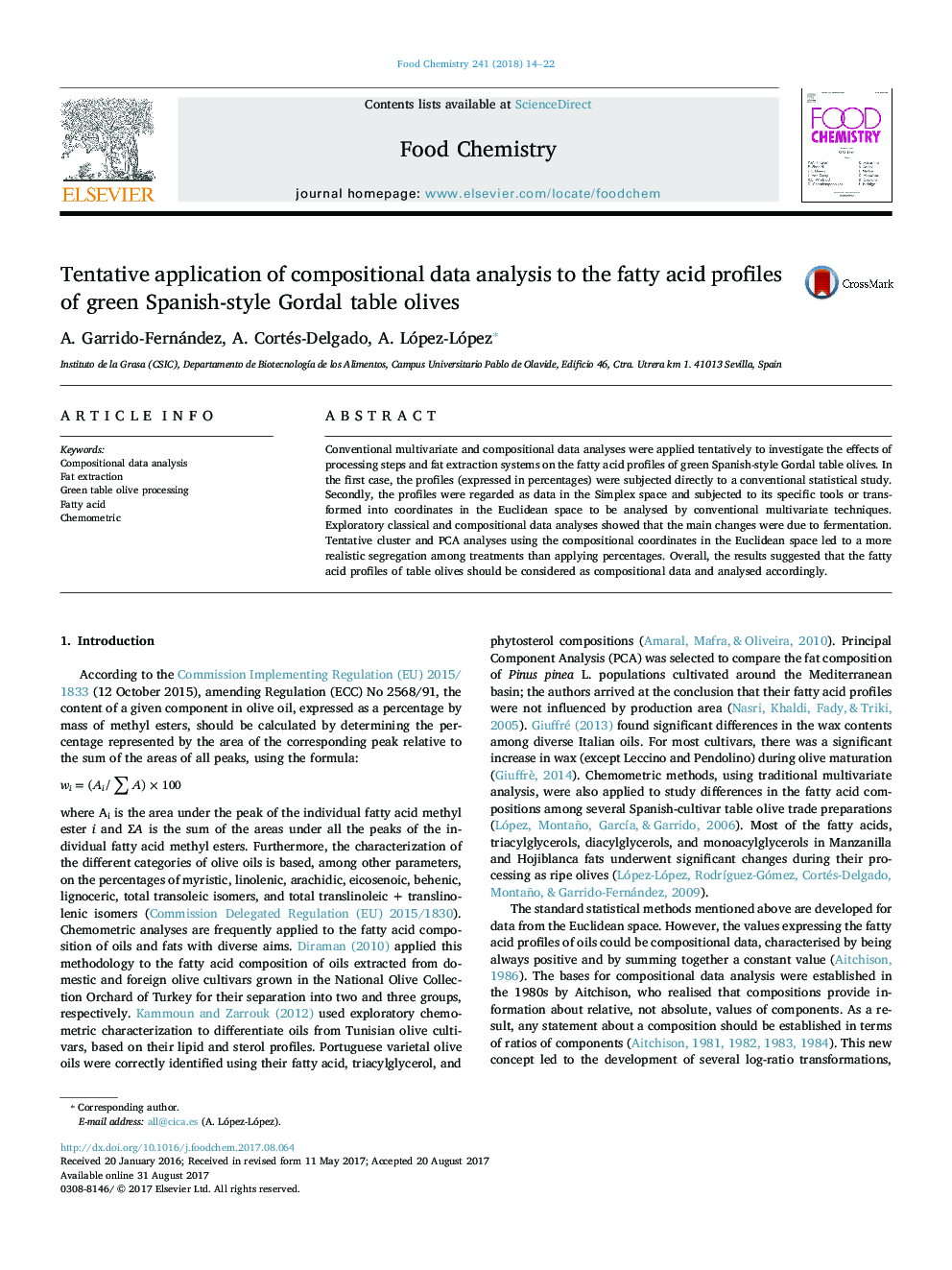| کد مقاله | کد نشریه | سال انتشار | مقاله انگلیسی | نسخه تمام متن |
|---|---|---|---|---|
| 5133045 | 1492051 | 2018 | 9 صفحه PDF | دانلود رایگان |
- For the first time, compositional data analysis was applied to table olive fat.
- Data were summarised as central values, quartiles, variance array and total variance.
- Exploratory data analysis was based on compositional bi-plots and balance-dendrograms.
- Cluster and PC analysis using coordinates led to a realistic treatment segregation.
- Table olives fatty acid profiles were described by compositional data analysis.
Conventional multivariate and compositional data analyses were applied tentatively to investigate the effects of processing steps and fat extraction systems on the fatty acid profiles of green Spanish-style Gordal table olives. In the first case, the profiles (expressed in percentages) were subjected directly to a conventional statistical study. Secondly, the profiles were regarded as data in the Simplex space and subjected to its specific tools or transformed into coordinates in the Euclidean space to be analysed by conventional multivariate techniques. Exploratory classical and compositional data analyses showed that the main changes were due to fermentation. Tentative cluster and PCA analyses using the compositional coordinates in the Euclidean space led to a more realistic segregation among treatments than applying percentages. Overall, the results suggested that the fatty acid profiles of table olives should be considered as compositional data and analysed accordingly.
Journal: Food Chemistry - Volume 241, 15 February 2018, Pages 14-22
